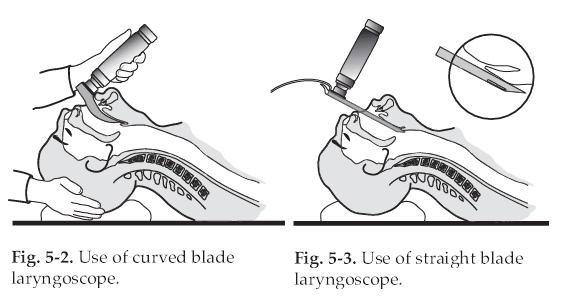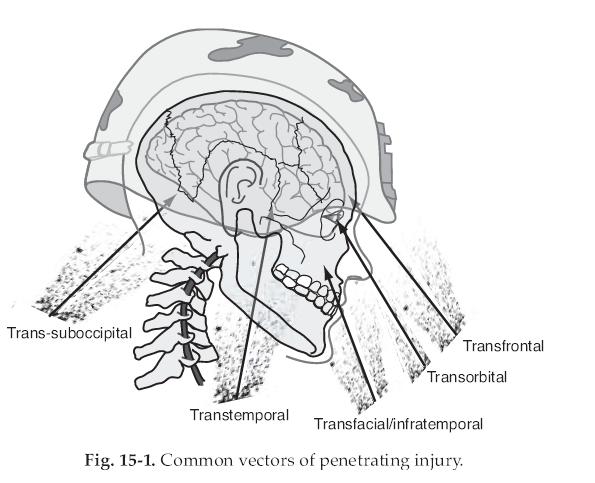
Once again a team of volunteers representing the Military Health System and numerous clinical specialties has committed itself to delimiting state-of-the-art principles and practices of forward trauma surgery. War surgery and treatment of combat casualties at far forward locations and frequently under austere conditions continue to save lives. Military medical personnel provide outstanding health support to those serving in harm’s way. As the face of war continues to evolve so must the practice of medicine to support those who so selflessly fight the global war on terrorism. Today American military men and women face a new terrain of mobile urban terrorism and conflict. Despite advances in personal and force protection provided to our forces they remain vulnerable to blast wounds burns and multiple penetrating injuries not usually encountered in the traditional civilian setting. This publication expertly addresses the appropriate medical management of these and other battle and non battle injuries.
This edition contains new material that updates the management of war wounds and is filled with over 150 specially drawn illustrations. Equally important is the use of an outline bulleted format that is so much more concise than the verbosity of the previous editions. Additionally emphasis in this edition is on the all-important “Emergency” in Emergency War Surgery—surgery performed at levels II and III—that constitutes the raison d’ętre for military surgery.
THIS IS THE LARGEST COLLECTION FOR SALE!!!
JUST LOOK AT WHAT YOU WILL RECEIVE!
|
Contents
EDITORIAL & PRODUCTION
EDITORIAL BOARD
CONTRIBUTORS
ACKNOWLEDGMENTS
FOREWORD
PREFACE
PROLOGUE
Chapter 1: Weapons Effects and Parachute Injuries
Epidemiology
Mechanism of Injury
Antipersonnel Landmines
Small Arms
Armored Vehicle Crew Casualties
Unexploded Ordnance
Parachute Injuries
Chapter 2: Levels of Medical Care
Level I
Level II
Forward Surgical Team (FST)
Level III
Level IV
Level V
Chapter 3: Triage
Categories
Special Categories
Combat Stress
Triage Decision Making
Setup Staffing and Operation of Triage System
Chapter 4: Aeromedical Evacuation
Medical Considerations/Requirements
Medical Evacuation Precedences
Phone Numbers
Critical Care Air Transport Teams (CCATT)
Chapter 5: Airway/Breathing
Initial Management
Orotracheal Intubation
Rapid Sequence Intubation (RSI)
Difficult Airway
Surgical Cricothyrotomy
Blind Intubation
Chapter 6: Hemorrhage Control
Stop the Bleeding
Tourniquet
Internal Bleeding
Hemostatic Agents
Chapter 7: Shock and Resuscitation
Recognition and Classification
Control Bleeding
Controlled Resuscitation
Transfusion Therapy
Walking Blood Bank
Chapter 8: Vascular Access
Subclavian Vein or Internal Jugular Vein
Greater Saphenous Vein
Chapter 9: Anesthesia
Induction of General Anesthesia
Rapid Sequence Intubation
Chapter 10: Infections
Diagnosis
Common Microorganisms
Treatment
Empiric Coverage
Soft Tissue Infections
Intraabdominal Infections
Pulmonary Infections
Sepsis
Dosages
Chapter 11: Critical Care
Damage Control
Resuscitation From Shock
Traumatic Brain Injury
Pulmonary System and Ventilators
Cardiovascular System
Renal System and Electrolytes
Hematologic System
Gastrointestinal System and Nutrition
Immune System and Infections
Endocrine System
Musculoskeletal System
Preparation for Evacuation
Chapter 12: Damage Control Surgery
Phases
Chapter 13: Face and Neck Injuries
Airway
Bleeding
Fracture Management
Soft Tissue Injuries
Penetrating Neck Trauma
Specific Face and Neck Injuries
Vertebral Artery
Internal Carotid Artery
Internal Jugular Vein
Trachea
Esophagus
Otologic Injury
Chapter 14: Ocular Injuries
Triage
Open Globe
Anterior Segment Injuries
Cornea Chemical Injuries
Corneal Abrasions
Corneal Ulcer and Keratitis
Foreign Bodies
Hyphema
Retrobulbar Hemorrhage
Lateral Canthotomy
Orbital Floor (Blowout) Fractures
Lid Lacerations
Laser Eye Injuries
Enucleation
Chapter 15: Head Injuries
Types
Classification
Glasgow Coma Scale
Management Medical
Management Surgical
Chapter 16: Thoracic Injuries
Life-Threatening Injuries
Tube Thoracostomy
Resuscitative Thoracotomy
Median Sternotomy
Specific Injuries:
Vascular
Heart
Lung
Esophagus
Diaphragm
Chapter 17: Abdominal Injuries
Indication for Laparotomy
Diagnostic Adjuncts
Abdominal Ultrasound
Diagnostic Peritoneal Lavage
CT Scan
Wound Exploration
Stomach Injuries
Duodenum Injuries
Pancreas Injuries
Liver Injuries
Spleen Injuries
Colon Injuries
Rectum Injuries
Retroperitoneal Injuries
Abdominal Closure
Chapter 18: Genitourinary Tract Injuries
Renal Injuries
Ureteral Injuries
Bladder Injuries
Urethral Injuries
External Genitalia
|
Chapter 19: Gynecologic Trauma and Emergencies
Vulva Injuries
Vagina Injuries
Uterus/Cervix Injuries
Emergent Total Abdominal Hysterectomy
Adnexa
Retroperitoneal Hematoma
Gynecologic/Obstetric Emergencies
Vaginal Hemorrhage: Not Pregnant
Vaginal Hemorrhage: Pregnancy
Precipitous Vaginal Delivery
Emergency Cesarean Section
Neonatal Resuscitation
Chapter 20: Wounds and Injuries of the Spinal Column and Cord
Classification
Pathophysiology
Transport
Cervical Spine
Halo Immobilization
Thoracic and Lumbar Spine
Emergent Surgery
Pharmacologic Treatment
General Management
Chapter 21: Pelvic Injuries
Blunt Injuries
Penetrating Injuries
Chapter 22: Soft-Tissue Injuries
Presurgical
Wound Care
Crush Syndrome
Compartment Syndrome
Fasciotomy
Chapter 23: Extremity Fractures
Introduction
Transportation Casts
Shoulder/Humerus
Elbow/Forearm
External Fixation
Skeletal Traction
Chapter 24: Open Joint Injuries
Signs
Treatment
Joint Infection
Hip Wounds
Shoulder Wounds
Chapter 25: Amputations
Indications
Technique
Postoperative Management
Transportation Casts
Chapter 26: Injuries to the Hands and Feet
Types of Injuries
Hand
Foot
Chapter 27: Vascular Injuries
Evaluation and Diagnosis
Management
Shunt Placement
Compartment Syndrome
Chapter 28: Burns
Point of Injury Care
Escharotomy
Estimation of Fluid Resuscitation
Rule of Nines
Management
Wound Care
Extremity Care Escharotomy
Electrical Injury
Chemical Burns
Grafting: "How I Do It"
Chapter 29: Environmental Injuries
Cold Injury
Hypothermia
Heat Injury
Altitude Illness
Chapter 30: Radiological Injuries
Introduction
Triage
Decontamination
Chapter 31: Biological Warfare
Detection Diagnosis
Decontamination
Evacuation Precautions
Bacterial Agents
Viral Agents
Toxins
Chapter 32: Chemical Injuries
Protection
Nerve Agents
Vesicants
Cyanogens
Surgical Treatment
Chapter 33: Pediatric care Anatomic and Physiologic
Considerations
Pulmonary
Cardiovascular
Burns
Gastrointestinal
Hematology
Renal
Modified Glasgow Coma Scale
Rapid Sequence Intubation
Equipment Age and Weight
Matched Sizes
Commonly Used Drugs
Surgical Management
Chapter 34: Care of Enemy Prisoners of War/Internees
UN and Geneva Convention
What Healthcare Providers Should Do
What Healthcare Providers Should Not Do
Recusal
Planning
Medical Photography
Security
Envoi
Appendix 1: Principles of Medical Ethics
Appendix 2: Glasgow Coma Scale
Appendix 3: Theater Joint Trauma Record
Index
|

VERY EASY TO USE! JUST PUT IN YOUR CD-DRIVE AND THE DISK WILL AUTO START*
OVER 480+ PAGES IN PDF FORMAT IN THIS OUTSTANDING COLLECTION!
GET ALL OF THESE FOR 1 LOW PRICE.
THIS WON'T LAST LONG SO BID NOW OR BUY IT NOW.
SYSTEM REQUIREMENTS
Windows 98/NT/Me/2000/XP/VISTA
C
D-ROM Drive
MOST IF NOT ALL MANUALS ARE IN ADOBE PDF FORMAT. ADOBE ACROBAT IS REQUIRED TO READ OR PRINT MOST MANUALS.
IF YOU DO NOT HAVE ADOBE ACROBAT IT IS INCLUDED ON THE DISK FOR YOUR CONVENIENCE.
DISK'S COME WITH NO FRILLS. THEY'RE JUST A SET OF PLAIN DISK IN A PAPER SLEEVE WITH ULTIMATE QUALITY CONTENT. THEY WILL PLAY ON A COMPUTER WITH THE SYSTEM REQUIREMENTS AS STATED ABOVE. We urge you to compare anywhere else. We have the highest quality at the lowest cost. *Please make sure your disk drive is set to auto start option and you have adobe reader installed.
THESE Public domain U.S. Government manuals HAVE BEEN APPROVED FOR PUBLIC RELEASE - DISTRIBUTION IS UNLIMITED.
All material is either in the public domain or I have resell rights. No copyrights are infringed. The Ultimate EMERGENCY WAR SURGERY DISK is copyright 2003-2007 and may not be reproduced copied or resold under any circumstances.

